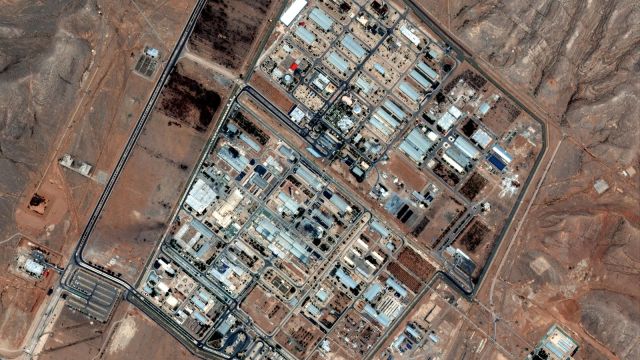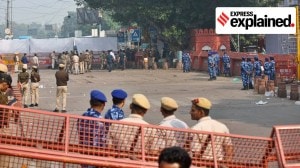Stay updated with the latest - Click here to follow us on Instagram
Why US refused to use bunker-buster bombs at Iran’s deepest nuclear site Isfahan
While US B-2 bombers dropped dozens of bunker-busting bombs on the Fordow and Natanz nuclear sites, Isfahan was left to missile strikes alone.
 This satellite image provided by Maxar Technologies shows the Isfahan enrichment facility in Iran after being hit by Israeli airstrike. (AP)
This satellite image provided by Maxar Technologies shows the Isfahan enrichment facility in Iran after being hit by Israeli airstrike. (AP)The United States military did not deploy its most powerful bunker-buster bombs against one of Iran’s most fortified nuclear sites, Isfahan, during last weekend’s strikes, because the underground facility lies too deep for such weapons to be effective, the top US general told lawmakers in a closed-door briefing, according to CNN.
Air Force General Dan Caine, Chairman of the Joint Chiefs of Staff, said the Massive Ordnance Penetrator, a 30,000-pound bunker buster, was not used at the Isfahan site as it would not have reliably destroyed the underground structures that reportedly store nearly 60 per cent of Iran’s enriched uranium stockpile. Instead, the US military used Tomahawk cruise missiles launched from a submarine to strike the site.
The Isfahan site, located in central Iran, is considered one of Tehran’s most strategically sensitive nuclear facilities. While US B-2 bombers dropped dozens of bunker-busting bombs on the Fordow and Natanz nuclear sites, Isfahan was left to missile strikes alone.
Caine’s classified comments were shared during a Thursday briefing to members of Congress alongside Defense Secretary Pete Hegseth, Secretary of State Marco Rubio, and CIA Director John Ratcliffe. A spokesperson for Caine declined to comment publicly on the classified discussions.
According to US intelligence officials cited in the briefing, Iran’s most critical nuclear material — including highly enriched uranium — is likely located underground at both the Isfahan and Fordow sites.
 Isfahan, 1924 (Source: Wikipedia)
Isfahan, 1924 (Source: Wikipedia)
“Some of Iran’s capabilities are so far underground that we can never reach them,” Democratic Senator Chris Murphy told CNN after attending the briefing. “They have the ability to move a lot of what has been saved into areas where there’s no American bombing capacity that can reach it.”
An initial assessment by the Defense Intelligence Agency (DIA) after the strikes found that Iran’s core nuclear infrastructure — particularly its enriched uranium — survived the attack and the programme was likely only set back by several months. Some officials suspect Iran may have moved sensitive materials prior to the US operation.
President Donald Trump, however, insisted Friday that “nothing was moved” from the sites before the attack. But multiple lawmakers acknowledged that while the physical structures were heavily damaged, the operation did not aim to destroy the enriched uranium stockpile.
“There is enriched uranium in the facilities that moves around, but that was not the intent or the mission,” Republican Rep. Michael McCaul told CNN. “We need a full accounting… that’s why Iran has to come to the table.”
“The program was obliterated at those three sites. But they still have ambitions,” said Republican Senator Lindsey Graham, who added that he doesn’t know the current location of Iran’s 900 pounds of highly enriched uranium.
Weapons expert Jeffrey Lewis of the Middlebury Institute of International Studies told CNN that satellite imagery from Planet Labs shows Iranian access to the Isfahan tunnels resumed on June 27, with one entrance cleared of obstructions.
“If Iran’s stockpile of HEU was still in the tunnel when it was sealed, it may be elsewhere now,” Lewis said.
The DIA’s preliminary report confirmed moderate to severe damage to above-ground facilities at the three nuclear sites. Officials noted that while access to remaining underground uranium could be complicated, Iran’s technical know-how remains intact.
“Iran still has the know-how to put back together a nuclear program,” said Senator Murphy.
Murphy added, “If they still have enriched material, centrifuges, and the capability to reassemble them into cascades, we’ve only delayed them by months — not years.”
General Caine and Defense Secretary Hegseth confirmed the operation against Fordow went exactly as planned, but refrained from offering specifics on damage assessments at Isfahan or Natanz.





- 01
- 02
- 03
- 04
- 05


























